Unleash the boundless "space perspectives"
and deliver a new Kando experience
From the perspective of "Co-Creation," the "SESSIONS" series features dialogues that introduce the activities of Sony's diverse employees to create Kando (emotion), based on Sony's Purpose to "fill the world with emotion, through the power of creativity and technology." Through conversations between Sony employees and our various partners, this series gives a candid look at scenes from real Sony projects, demonstrating what kinds of "Co-Creation" are enabled by the combination of Sony's creativity and technology with the efforts of business partners and creators, and what kind of Kando (emotion) these initiatives spread around the world.
In this, the fifth SESSIONS installment, we address the STAR SPHERE project. The purpose of this project is to enable people to feel closer to the universe and discover a new perspective on space. Through the experience of operating a nano-satellite jointly developed by Sony and the University of Tokyo, with support from JAXA, users can take their own photos and videos of space and earth. We introduce the project concept, "space perspectives" and the current Co-Creation activity (SESSIONS) through a dialogue with Naoko Yamazaki, a former JAXA astronaut and Yoshihiro Mizata of the Project Planning Leader at the Space Entertainment Promotion Office of Sony Group Corporation.
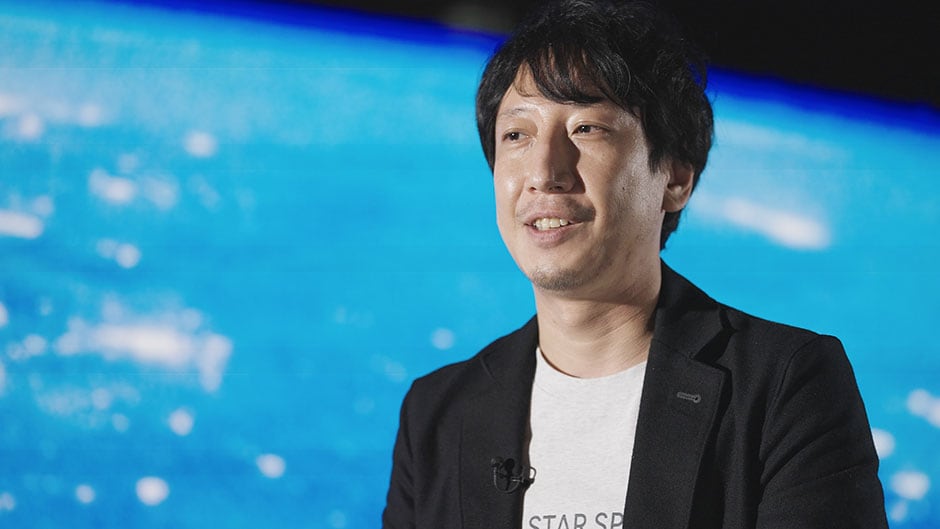
Yoshihiro Mizata
Project Planning Leader
Space Entertainment Promotion Office
Sony Group Corporation

Naoko Yamazaki
Astronaut
What is STAR SPHERE?
Sony implemented joint development together with the University of Tokyo for the JAXA project. This project resulted in a nano-satellite called "EYE," equipped with a camera made by Sony. EYE was launched on January 3, 2023 safe and sound. We expect that the satellite will be used in various fields, such as education and art. Effective Spring 2023, the "Premium Photography/Videography Experience" and "Space Photography Tour", will begin. These will be the world's first services that allows users to connect with space, through a whole new experience of operating a satellite-operating using a simulator.

A Joint project by Sony, JAXA, and the University of Tokyo
—Sony implemented joint development with the University of Tokyo as a part of the JAXA project and developed the nano-satellite., "EYE" was launched in Cape Canaveral, the U.S., on January 3rd, 2023. We asked Yoshihiro Mizata to tell us more about STAR SPHERE.
A lunar eclipse could be observed in Japan, and this quickly became a lively topic on social networks and elsewhere. Actually, space is quite close to us, but when it comes to trying to conduct activities there, it is difficult to devise specific methods of doing so. Through our STAR SPHERE project, we would like to bring space closer than ever and create a new Kando experience for users. In this way, we would like to realize Sony's Purpose, even in outer space: "fill the world with emotion, through the power of creativity and technology."
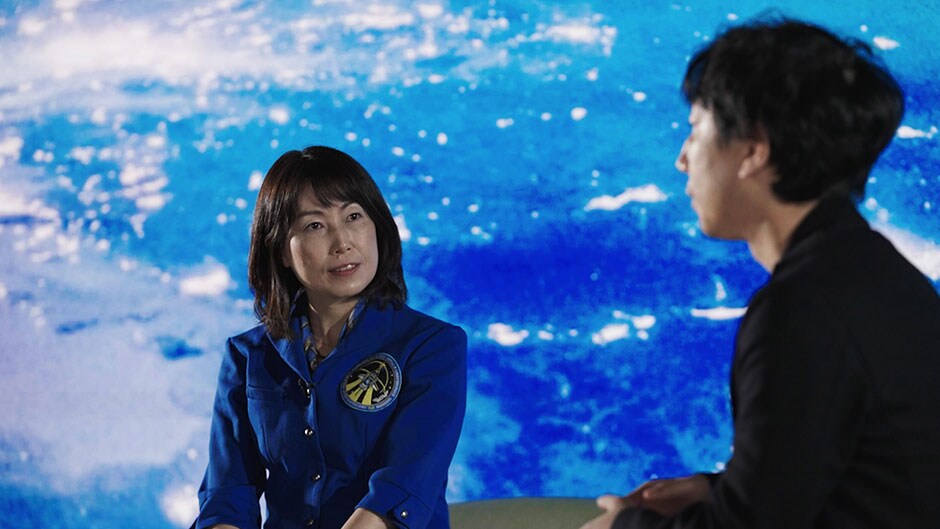
—Why have Sony's members become involved in this space project?
Mizata: A number of Sony staff members with a passion for creating a new Kando in space and doing other things there got together and started activities in 2017.

Mizata: There are many engineers at Sony. There are quite a number of members that would like to do new things in space using items that we create. Additionally, I believe that Sony originally has a strong sense of monozukuri, or pride in craftsmanship.
On the other hand, Sony has been creating various forms of content, such as music, movie and game. Thus, members that would like to create such new content using outer space gathered and started their activities.
—What kind of members comprise the STAR SPHERE project, which was jointly implemented with JAXA and the University of Tokyo?
Mizata: This project started as an effort within the JAXA's "J-SPARC" framework. Sony primarily develops the camera-related components of the satellite and the operation system. The University of Tokyo is in charge of the body, known as the satellite bus. JAXA is responsible for giving us advice with a central focus on the process of satellite development, including launching a spacecraft, method for obtaining licenses for ground stations, and etc.
Naoko Yamazaki (hereinafter, "Yamazaki"): To be honest, I was surprised that Sony members had been harboring these ideas since 2017. And I was also astounded at the speed that the concept became fruitful as an actual project in the third year since its start, taking substantially two years to achieve this level.
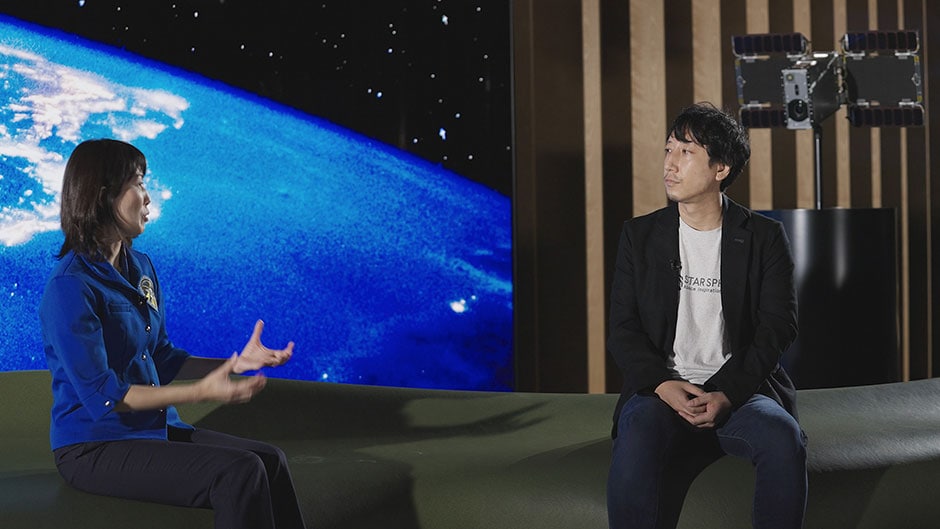
Unleash the "space perspectives" that allows everyone to see the earth
—Yuri Gagarin, who was an astronaut in the former Soviet Union, successfully achieved the first spaceflight in human history in 1961. For the 60 years or longer since then, only a limited number of people have been able to experience seeing the earth from space. Sony is about to extensively unleash a "space perspectives" for people throughout the world though the STAR SPHERE project.
Mizata: We think that the expression "space perspectives" has roughly two meanings. One involves the "view" —people actually see the earth and space. Another relates to how things and thinking are perceived in terms of space; in other words, what might be called the "standpoint."

Yamazaki: I was on board the space shuttle on April 5, 2010, and reached zero gravity in 8 minutes and 30 seconds. When I saw the earth for the first time through the window there, the earth was shining above my head. I was 400 km away from the earth, and I saw the planet right above me, which was stunning.
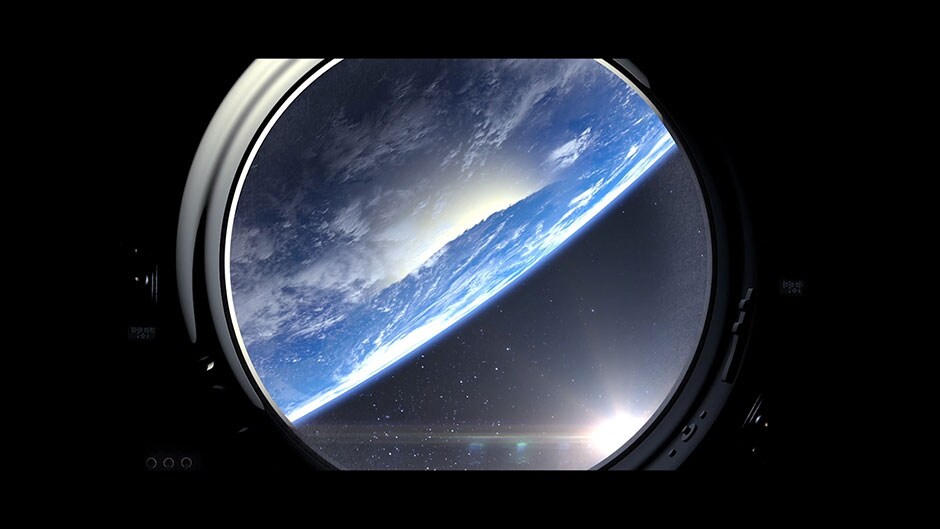
Yamazaki: This was my first intense experience—I realized that I was in zero gravity, with no absolute ups and downs. The earth I looked up in this way was blue, it was bathed in the morning sunlight, and blueness of the oceans and whiteness of clouds were conspicuous. The planet appeared just like a living creature. At the same time, I felt that the magnificence of the earth was the beauty of the collection of lives that everyone, including me, was living.
—In 2010, Ms. Yamazaki, you have already experienced the "space perspectives" from outer space. Have your behaviors and ways of thinking changed?
Yamazaki: When seeing the earth from space, the robustness of nature was very much apparent. However, the air covering the horizon is quite thin. If we think of the earth as an apple, the atmosphere is analogous to its thin skin. I was so surprised to sense that the earth was so fragile, in a sense.

Yamazaki: When we are leading our normal lives, we feel that the earth is so gigantic and we thoughtlessly rely on the power of "Mother Earth." However, when I saw the earth from space, it made me feel that we would instead have to protect it.
What STAR SPHERE can accomplish
—What can we achieve by unleashing the "space perspectives" made possible by STAR SPHERE?
Mizata: The other day, we did an experience at Yanagawa High School in Fukuoka based on the concept of "using a satellite to deliver a sense of humanity to aliens."
So, each group of students came up with various ideas, such as 'Let's tell aliens about the beauty of the many colors created by the earth,' or 'Let's show them Lake Biwa, which can be a water fountain when aliens come to Earth,' and show them.

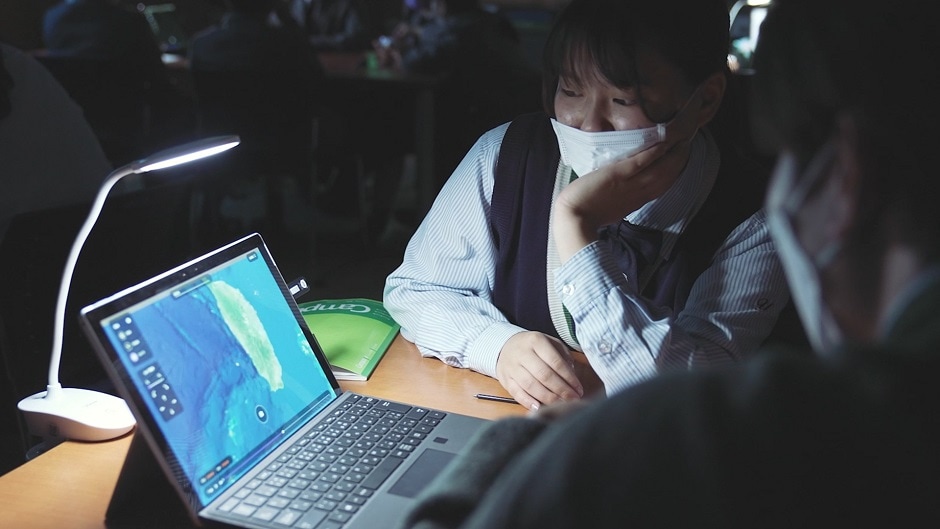
Mizata: For example, "we would take photos of the fish-bone pattern of deforestation in the Amazon rainforest in order to damage the earth on which they are living through their own lives little by little; however, since they know this fact, they are trying to protect the earth." As such, students came up with these kinds of ideas on their own and took pictures based on them using the simulator.
I truly believe that this was a great example of express humanity's tendency to how this satellite experience could be used.
Yamazaki: Very interesting. Identifying problems and finding solutions on the earth is of course important. At the same time, I was surprised that their vision was so wide that they were thinking about the situation from the point of view of aliens.
—We also asked Mizata about efforts with being made with the creators through the STAR SPHERE project.
Mizata: We are also discussing whether it is possible to express something unique to outer space by unleashing the "space perspectives"
through the nano-satellite. We have started to talk to contemporary artist Hiroshi Sugimoto as well as other artists and creators throughout the world. For example, even concerning expression using photos, there are limits such as taking photos from the ground, ariel shots from a drone, etc. Therefore, we are making efforts to expand the area of expression by taking photos from space.
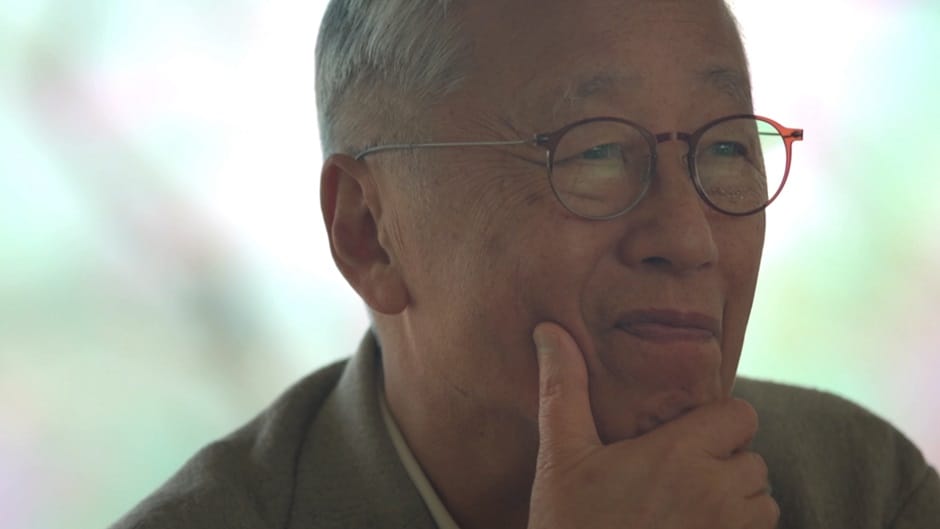

Mizata: Creators have requested us if they could do such things using a nano-satellite, which motivates our team of engineers. So, with the assistance of their creativity, we believe that our technological power has been further updated. Both of us have generated this synergistic effect.
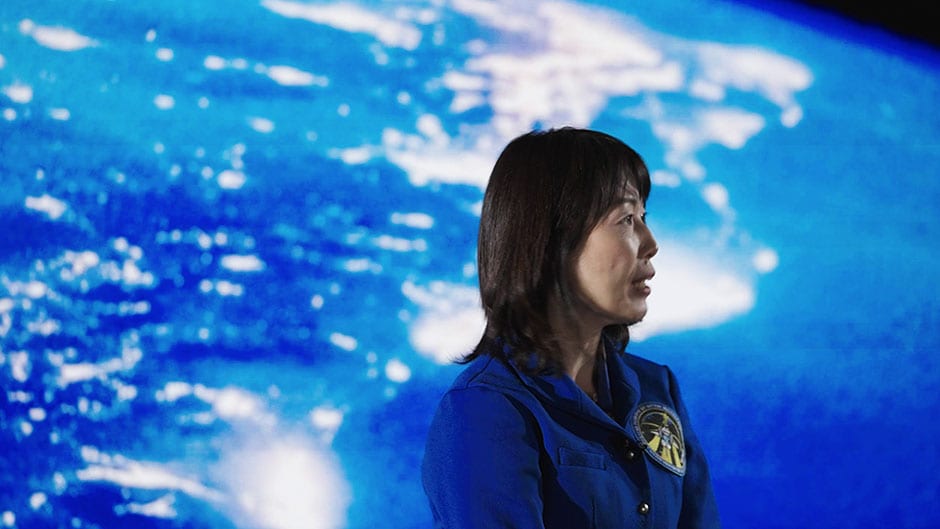
Yamazaki: When I went into space, I experimented growing plants such as shepherd's-purse in the International Space Station. When I saw the green from the plants within the room, I felt mentally healed. When it comes to space food, we are allowed to bring food there from our home countries as well as several items of our favorite clothing. In this way, we can express ourselves, and we lead our daily lives with a little creativity. We practiced calligraphy and made paintings with colors from juice and coffees. Various ingenuous ideas are being put into practice. When people actually experience and imagine the perspective from space, I believe they will come up great inspiration.
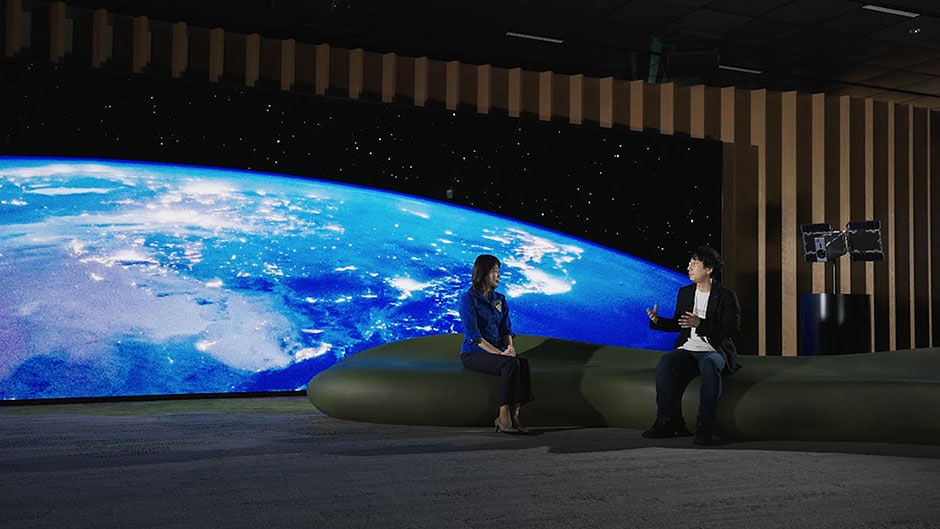
Mizata: I believe that there are Kando experiences, such as obtaining new expressions through space conceived by creators and changing adults' feelings towards the earth by observing the earth and space from children's points of view. We would like to create a succession of new and Kando experiences through space that no one has had so far in collaboration with different people, creators, children, and corporate personnel.
Sony's technologies used for releasing the "space perspectives"
—What technologies like that have allowed the "space perspectives" to be unleashed through STAR SPHERE?
Mizata: This nano-satellite is equipped with a Sony camera. Additionally, as the nano-satellite itself rotates up and down and left and right, users can shoot whatever they want, such as the earth or space, from outer space. It includes a remarkable high-sensitivity image sensor that allows users to beautifully capture images of the earth's night views and items that can be shot only with great precision. This is one of the major characteristics of the nano-satellite that uses Sony technology.
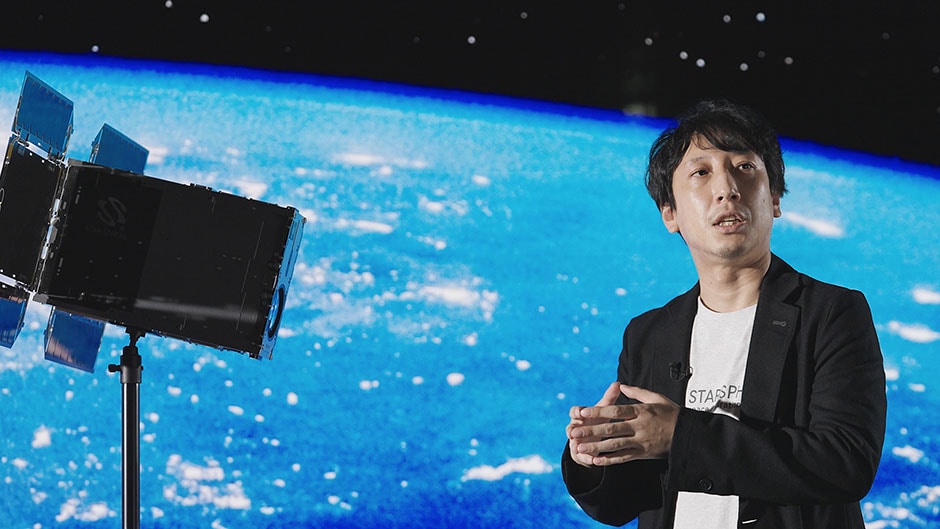

High operability simulator that allows anyone to navigate the artificial satellite
—In order to unlock the "space perspectives" for various people, it was necessary to create a simulator that would allow anyone to operate the artificial satellite from the ground.
Mizata: We have been thinking that we would like to offer a nano-satellite that can be operated in as intuitive a manner as possible. In order to make it happen, we have developed a simulator with a graphical user interface. The nano-satellite is capable of rotating up and down and left and right. Thus, the position it faces can be set using this simulator. In this way, we would like to generate new value where anyone, including those who have not been able to operate a satellite, can do so.
Yamazaki: This interface is truly revolutionary. It has not been found in artificial satellites so far, has it?
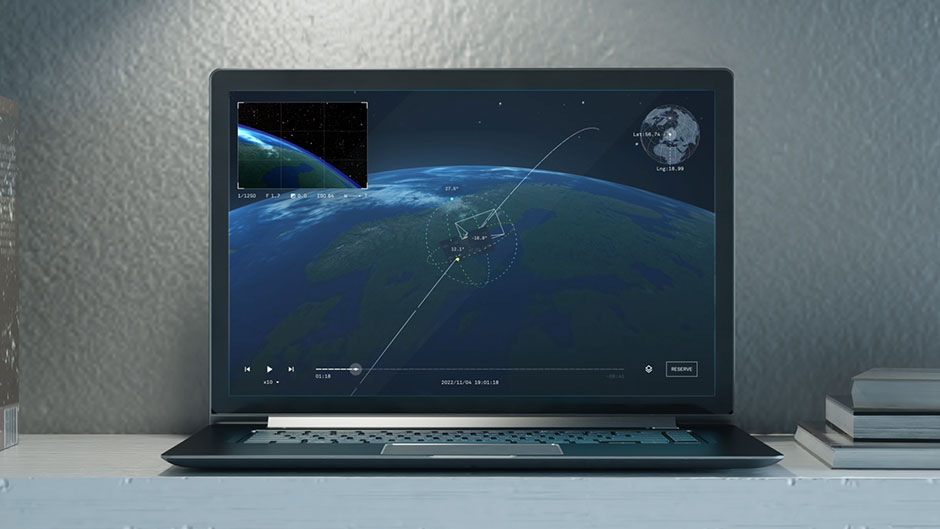
Mizata: For example, when creators would like to shoot images of the earth and space from outer space, information about the positional relationships between the earth and sun, the earth and moon, and the earth and stars is necessary. Graphically expressing such relationships is of help when understanding star positions.
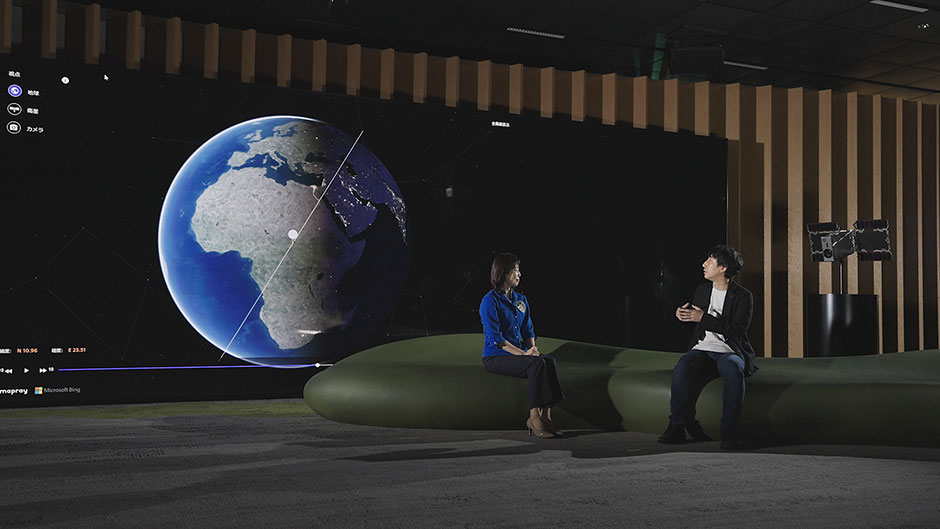
Mizata: We offer an easily comprehensible, friendly interface to the maximum extent possible. So, I am positive that children can operate the artificial satellite and capture images of the earth and space from their own viewpoints.
Yamazaki: I have tried this simulator several times, and it is extremely realistic. It offers a number of different options. For example, what's going on when I see the clouds and what is the earth's atmosphere like? As such, the simulator accurately simulates light on the horizon, and furthermore, it provides stars that color the night sky. I really think that we could easily make use of this kind of user interface. I am sure that this kind of simulator would function wonderfully on other satellites as well.
Mizata: We actually receive such positive feedback. Therefore, I really hope to form the future partnerships with companies that manufacture various satellites, so called collaboration with them.
Yamazaki: I thought that the fact that a creative corporation with wonderful technologies, like Sony, penetrates the market of space, is a very encouraging thing for other parties and the industry as a whole.
Space Photography Tour Inviting Naoko Yamazaki as a Guide
— In the STAR SPHERE project, the Space Photography Tour will start as a business service, with astronaut Naoko Yamazaki as a tour guide. Specifically, what can tour participants experience?
Mizata: Tour participants can operate the nano-satellite from the ground and take photos from outer space. In addition to this, the orbit in which the artificial satellite rotates around the earth differs in each tour. Therefore, we are thinking about a service that allows people to enjoy the tour-like orbit as an entertainment as well.
Yamazaki: When I heard about the Space Photography Tour for the first time, I thought that it would be a very wonderful project. When I went into space, I felt an interesting sense of reminiscence. It seems that space is far away from the earth, but our bodies and earth are originally made out of fragments of space and starts. Therefore, I felt like space was my hometown, and I felt that by visiting it, I was going back home, in a sense. This experience can be shared by everyone. So, it would be quite wonderous if we could share this feeling with tour participants.
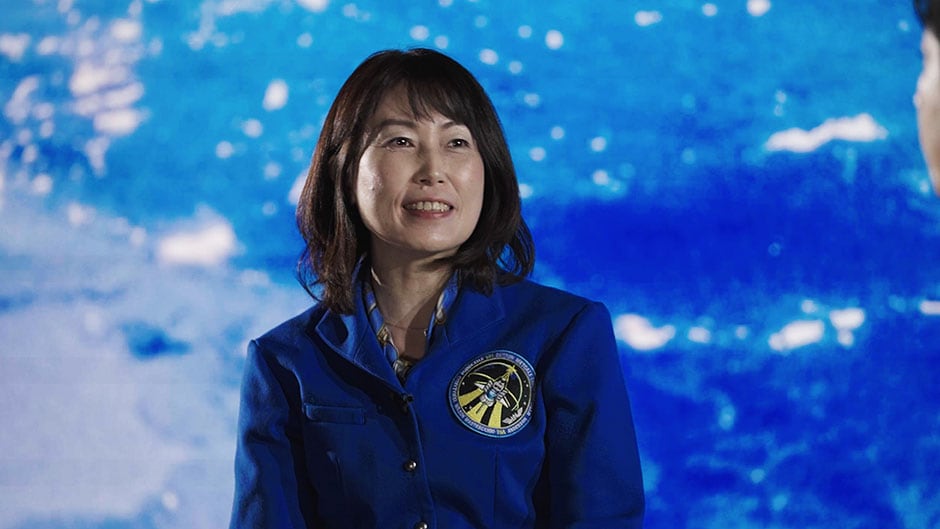
—Ms. Yamazaki saw the earth from various angles while staying in the International Space Station. She told us in what angles she would like to take shots from if she attended the Space Photography Tour herself.
Yamazaki: Regarding the daytime earth, I would like to take photos showing the blueness and other colors, the blue, shining air layers wrapping endlessly around the horizon, and the contrast with the sun. The difference between the darkness of outer space and the light from the earth's reflection of the sun is very intense. So, I think it would be interesting to take photos of this view of space—that is, that seen from space. If the timing is right, it would be intriguing to take shots of the sunrise when the sun comes out, the sunset when the sun is going down, the aurora…these natural phenomena would be nice to capture through images.
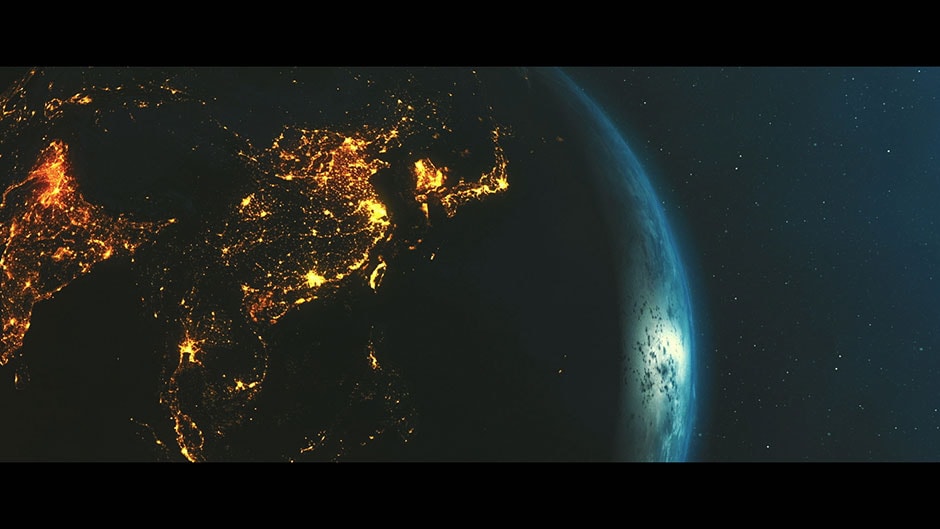
Yamazaki: Electric lights created by human activities shine with brightness at night. They give an impression of warmth as well as human strength. I think it would be also interesting if stars seen at the night sky and night views can be shot simultaneously. There are so many lovely angles really. I would be very glad if participants can take photos of the right moments, right locations, and right times when each of these phenomena feels just right.

Yamazaki: I believe that shooting photos means slicing out images of space and time from the whole based on the photographer's sensibility and making them memorable. Therefore, they are like someone's own story in the air. By sharing such stories with other people, a slight bond, like a sense of connectedness, would be generated among tour participants: "Oh, that person though about things like this!" When these types of feelings are shared with other people, great togetherness can be generated. This is what I expect. We feel the division sometimes on the ground. Yet, it is a truth that everyone is under the same sky and space. When everyone can share this feeling, they can pay attention to shared things, instead of differences.
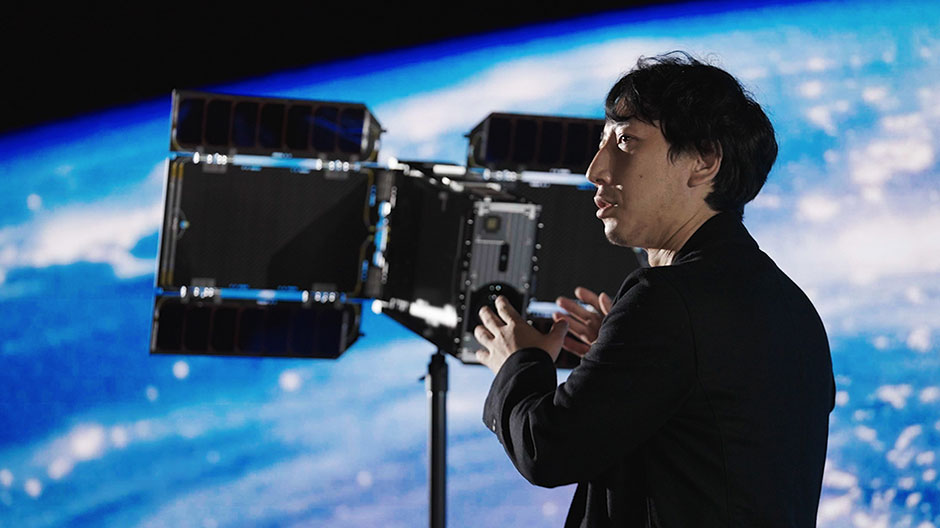
Mizata: Ms. Yamazaki who has actually experienced the "space perspectives", felt safe and warm when looking at the earth. I thought that if someone were to experience the same feeling, he or she might feel a sense of coexistence with different people or give consideration to them. If this happens, things will be going well. Therefore, I would like to share such values together.
Yamazaki: The expression "Kando experience" means that we feel something through our minds and then we put it into actions by a Kando experience through taking shots of the earth from space. "I will do my best from tomorrow," "I have not noticed this so far," and "Wow, that person thinks like that" — They will get energy to try to do something new. I believe that people who have had this Kando experience can feel that way. I expect Sony and the people involved in STAR SPHERE will create a new flow.
- *The information of service is as of 16th February, 2023. Plans are subject to change due to circumstances.

